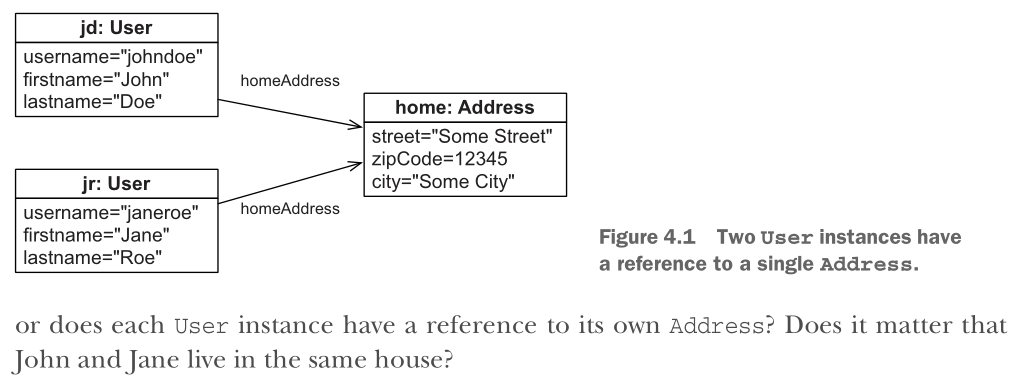JavaPersistenceWithHibernate第二版笔记-第四章-Mapping persistent classes-001区分entities and value types
一、介绍
1.这种引用方式不对,但删除时不能级联

要这种引用方式

2.The Bid class could be a problem. In object-oriented modeling, this is marked as a composition (the association between Item and Bid with the diamond). Thus, an Item is the owner of its Bid instances and holds a collection of references. At first, this seems reasonable, because bids in an auction system are useless when the item they
were made for is gone.But what if a future extension of the domain model requires a User#bids collection, containing all bids made by a particular User ? Right now, the association between Bid and User is unidirectional; a Bid has a bidder reference. What if this was bidirectional?
In that case, you have to deal with possible shared references to Bid instances, so the Bid class needs to be an entity. It has a dependent life cycle, but it must have its own identity to support (future) shared references.

3.编写实体类和值对象时,注意以下3点:
(1)Shared references—Avoid shared references to value type instances when you write your POJO classes.
(2)Life cycle dependencies—If a User is deleted, its Address dependency has to be deleted as well.
(3)Identity—Entity classes need an identifier property in almost all cases. Value type classes (and of course JDK classes such as String and Integer ) don’t have an identifier property, because instances are identified through the owning entity.



